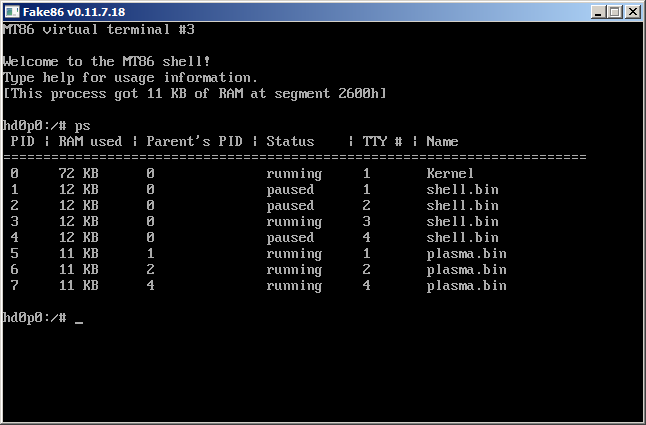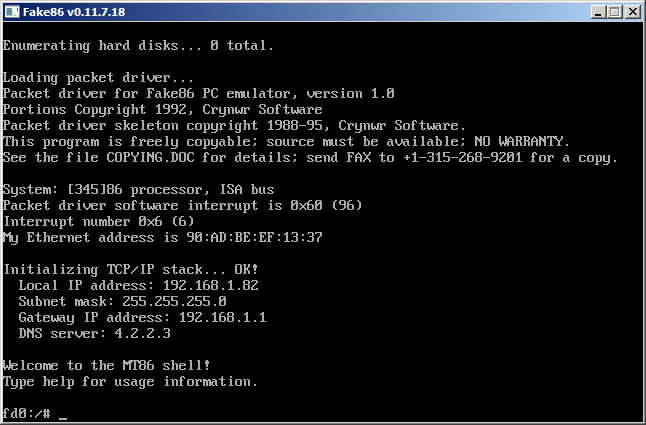Mike Chambers
Veteran Member
- Joined
- Sep 2, 2006
- Messages
- 2,621
just thought i'd post this, btw.. this shows how the processes fork. i executed the plasma demo from the shells on terminals 1, 2, and 4 and ran ps on term 3. when an application wants to fork a new process, it can specify in the call whether it's own process should be blocked until the child's process stops running or if it should stay active. being a shell, of course i made blocking calls and you can see the parents are paused. and of course, if i kill any processes from another shell or wherever (or a divide by zero/illegal opcode exception is tripped) it would also automatically kill it's child (and the child's children, recursively)
i think i've got all the process forking stuff down pretty solidly at this point. also, child processes always will inherit their environment (terminal and current filesystem path) from the parent.

i think i've got all the process forking stuff down pretty solidly at this point. also, child processes always will inherit their environment (terminal and current filesystem path) from the parent.



